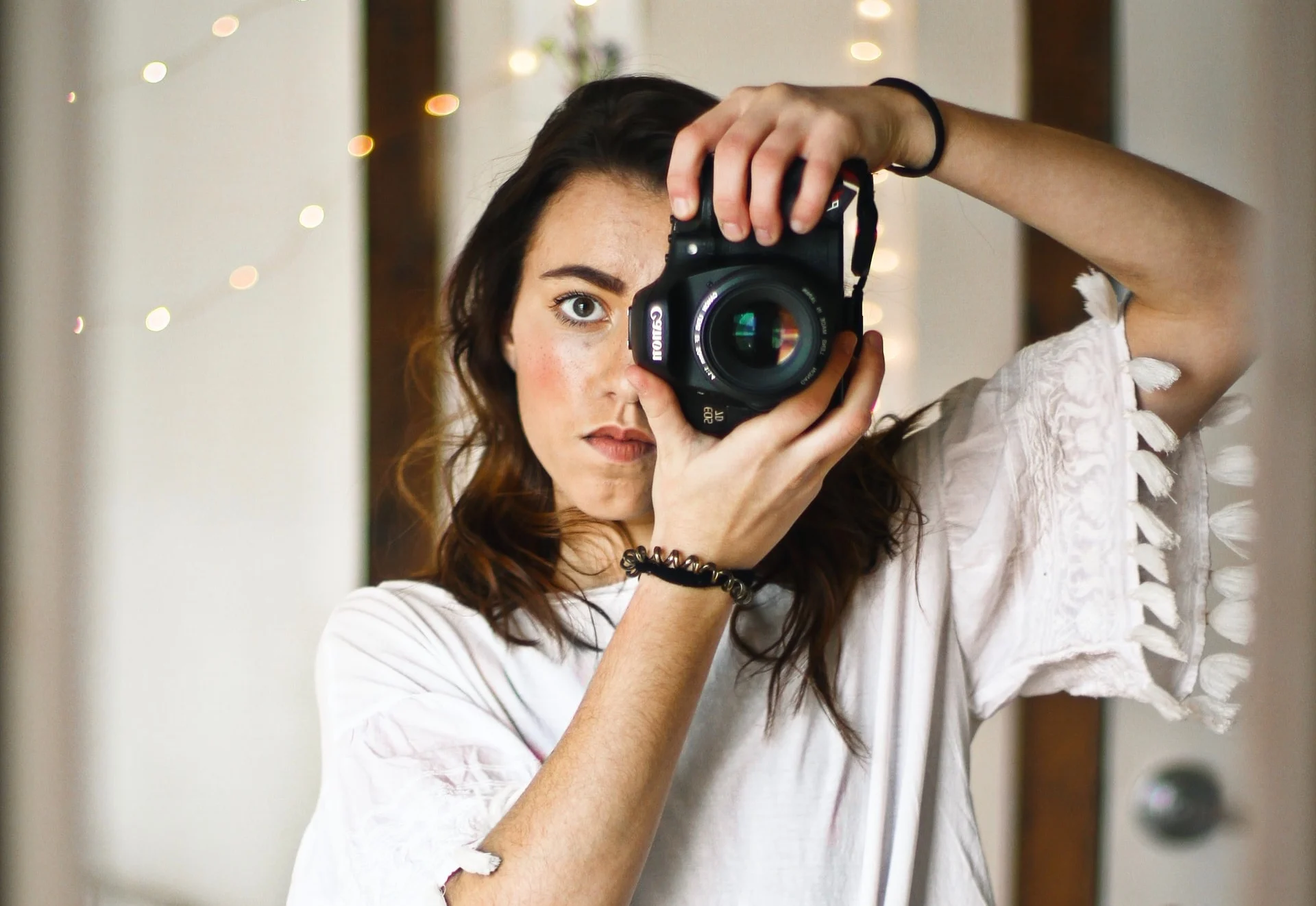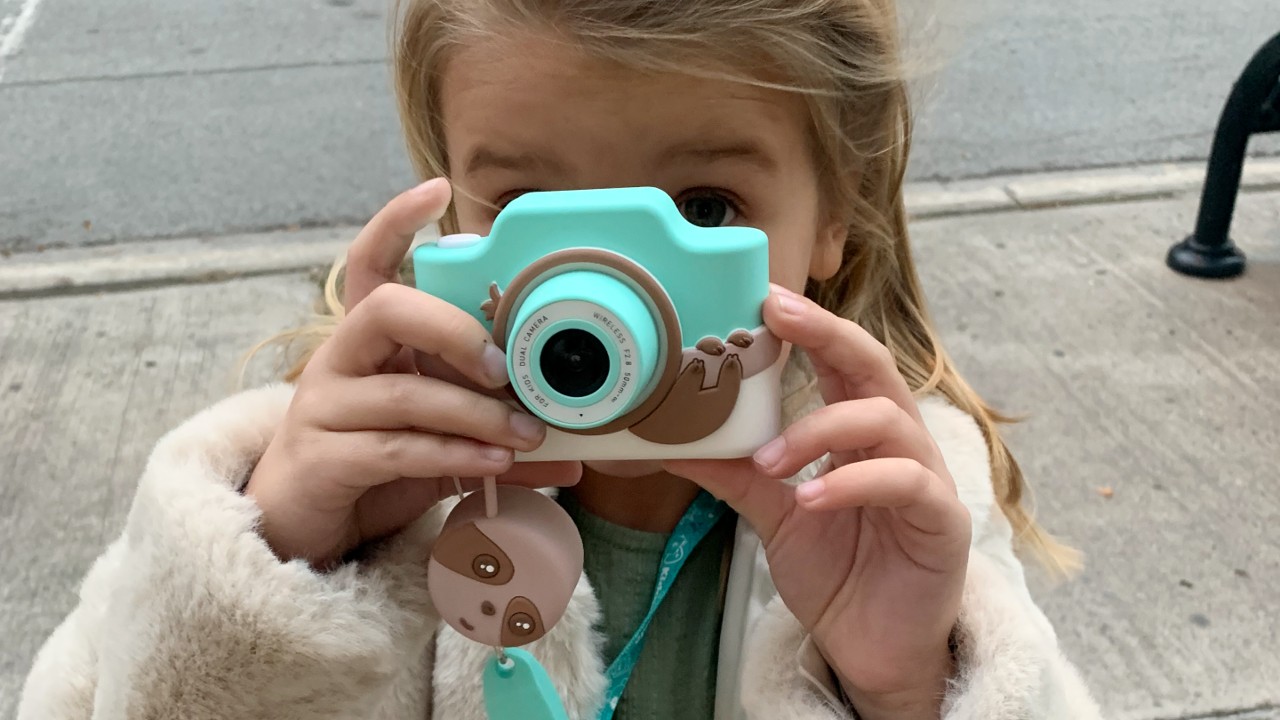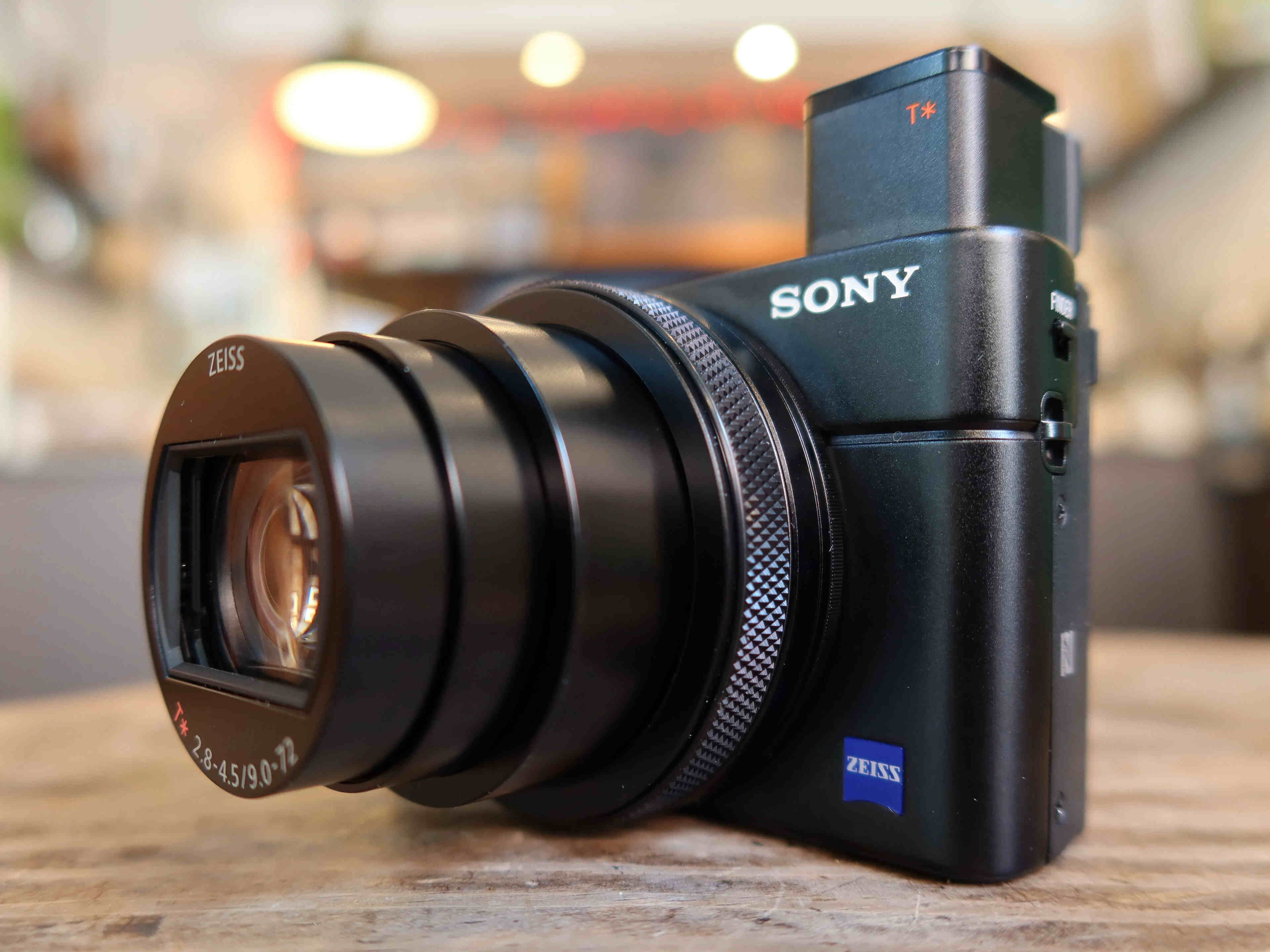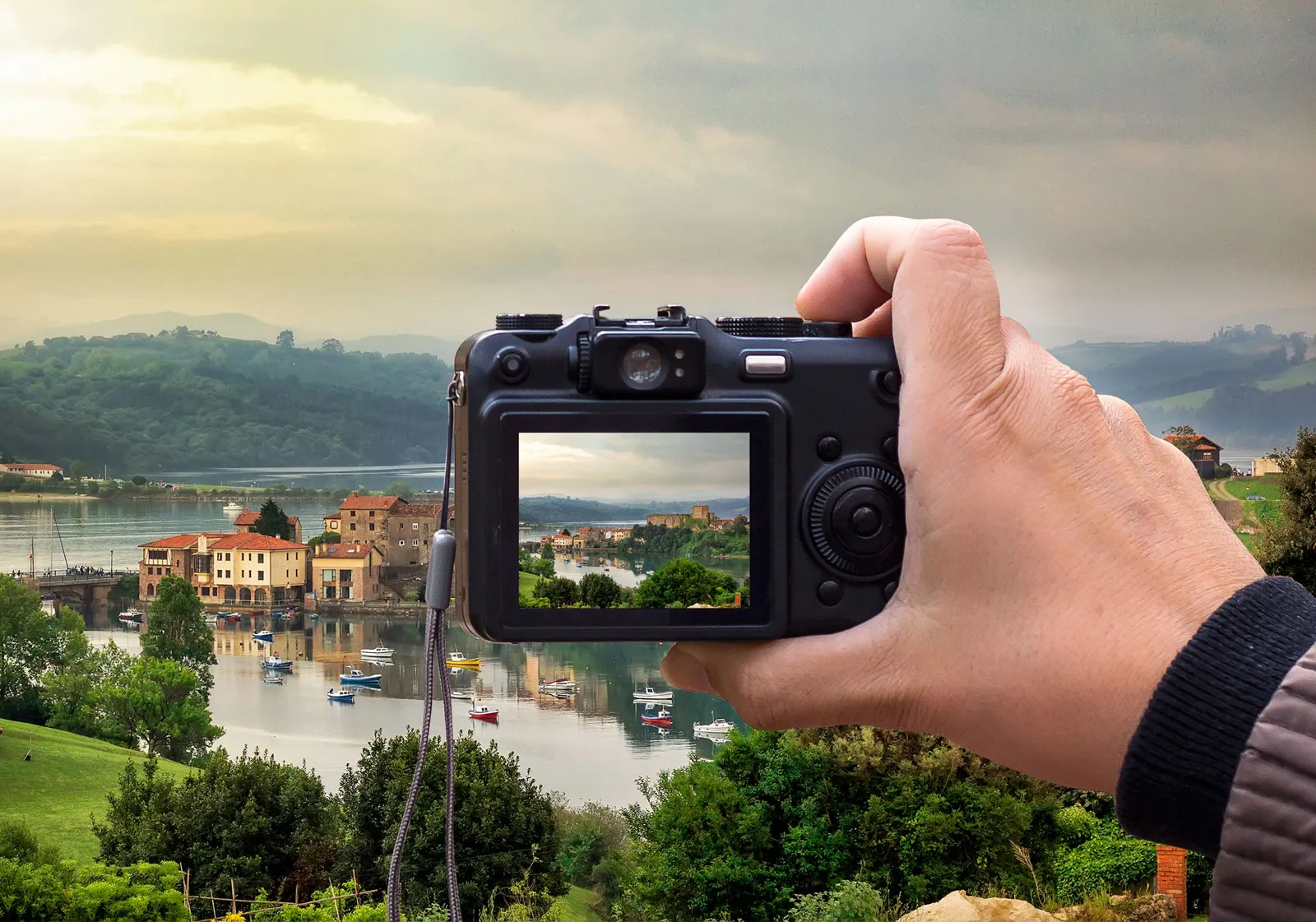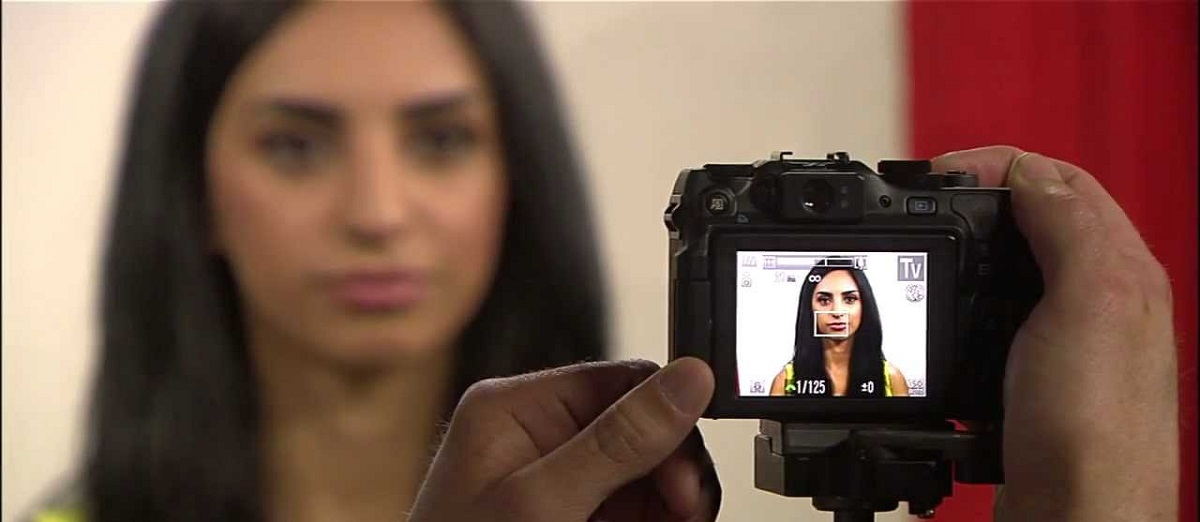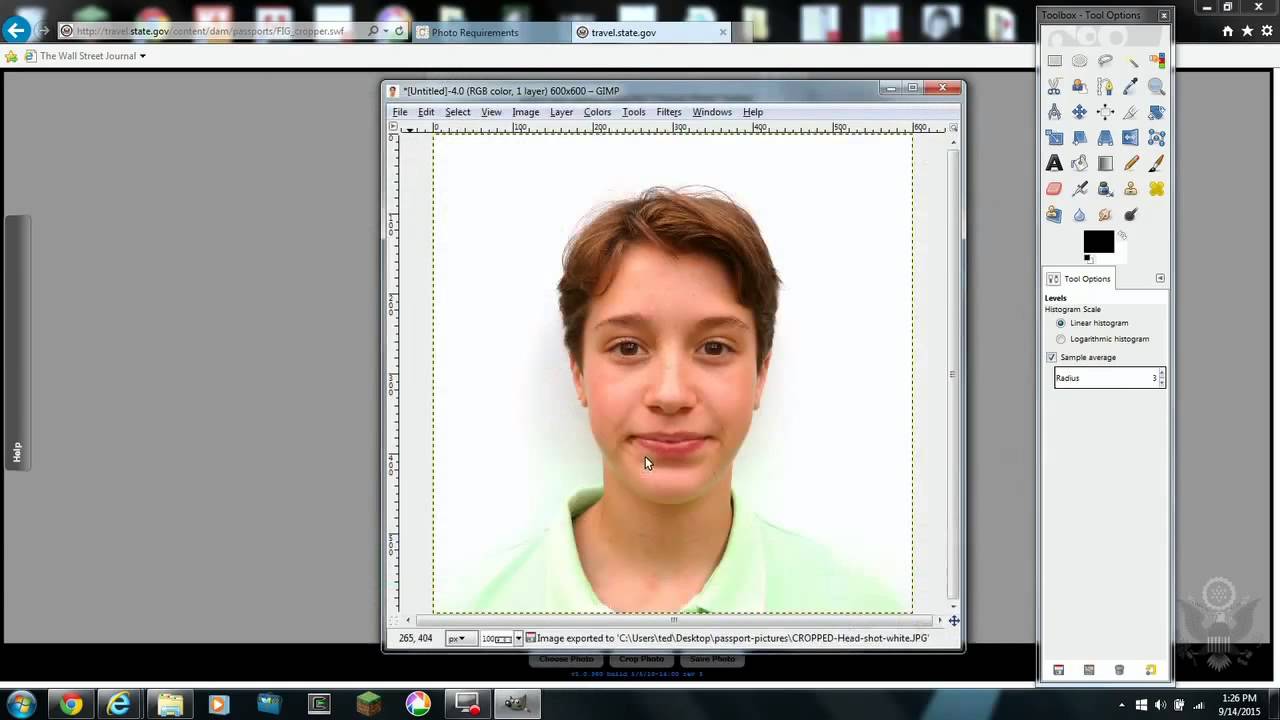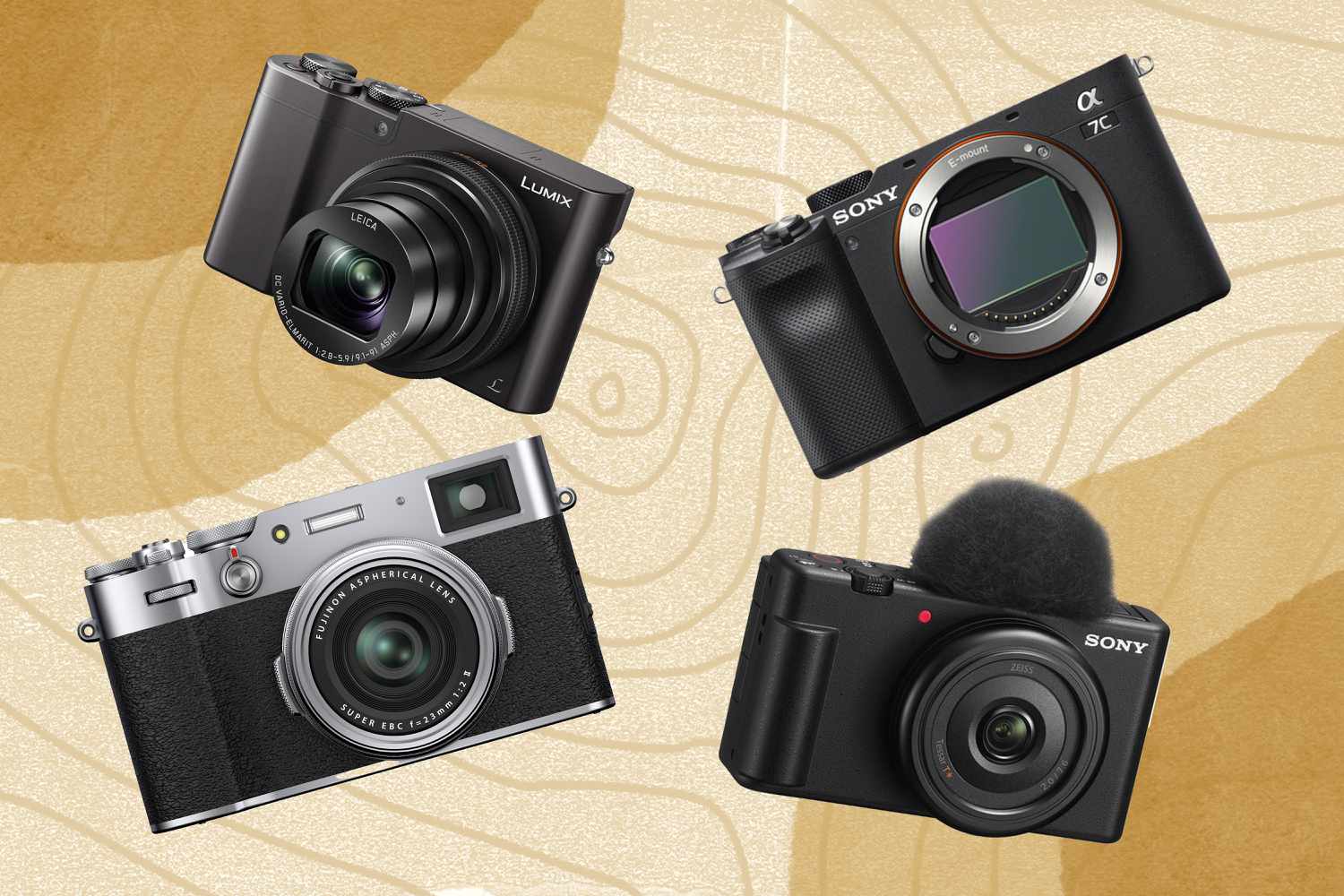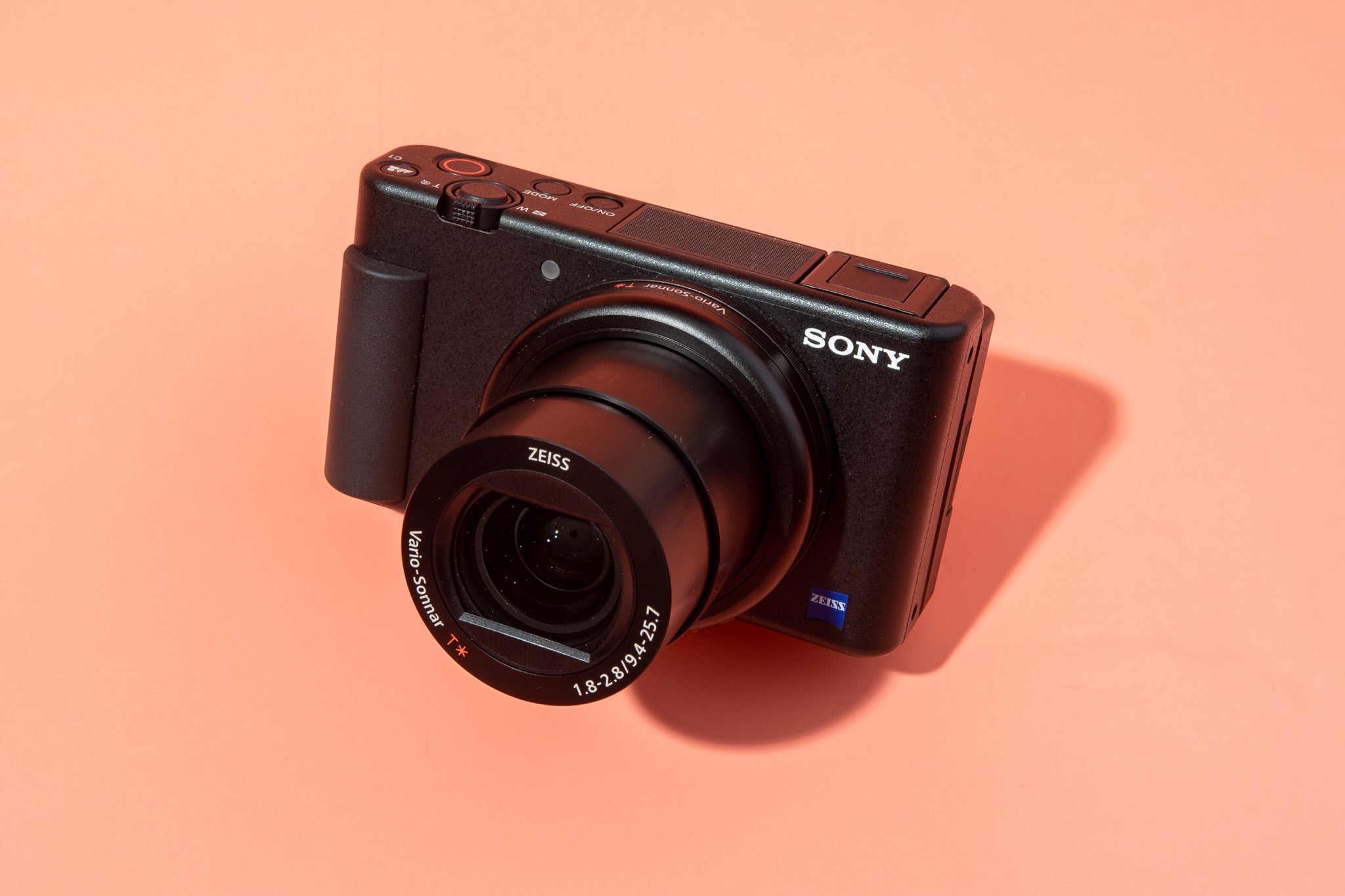Introduction
Welcome to the world of digital photography! With advancements in technology, capturing stunning photos has become more accessible than ever before. Whether you’re an aspiring photographer or a hobbyist looking to improve your skills, understanding how to take good photos with a digital camera is essential.
In this article, we will explore various techniques and tips that will help you unleash the full potential of your digital camera. From mastering the exposure triangle to experimenting with different angles and perspectives, you’ll be equipped with the knowledge to capture breathtaking images.
Photography is not just about pressing a button; it’s about storytelling and creating a visual impact. By mastering the art of photography, you can capture fleeting moments, express emotions, and preserve memories that will last a lifetime.
Whether you’re shooting landscapes, portraits, or events, learning the fundamentals of photography will enhance your skills and enable you to create beautiful images that leave a lasting impression. So let’s dive in and discover how to take your photography game to the next level!
Throughout this article, we will cover a wide range of topics, including understanding your digital camera, mastering the exposure triangle, utilizing natural lighting, composition techniques, choosing the right lens, and much more.
By the end of this guide, you will have gained a solid understanding of the key factors that contribute to capturing great photos and will be equipped with practical tips to apply in your photography journey.
So, grab your digital camera and get ready to embark on an exciting adventure filled with creativity and endless possibilities!
Understanding your digital camera
Before you start taking stunning photos with your digital camera, it’s important to understand its features and functionalities. By familiarizing yourself with the various components, settings, and options available, you’ll be able to utilize your camera to its fullest potential.
Begin by reading the camera’s manual or exploring online resources specific to your camera model. This will provide you with valuable information about the different buttons, dials, and menus. Some key features to pay attention to include:
- Camera modes: Most digital cameras offer different shooting modes, such as manual, aperture priority, shutter priority, and automatic. Understanding these modes and when to use them will give you greater control over your images.
- Image quality settings: Your camera may have options for image quality, such as RAW or JPEG. RAW files capture more data, allowing for greater flexibility during post-processing, while JPEG files are compressed and ready to share straight from the camera.
- White balance: White balance settings help you achieve accurate color representation in your photos. Experiment with different settings like auto, daylight, cloudy, or custom white balance to see how they affect the colors in your images under different lighting conditions.
- Exposure compensation: Exposure compensation allows you to adjust the brightness of your images. It’s useful in situations where the camera’s metering may incorrectly expose the scene, such as when shooting a backlit subject.
- Focus modes and points: Learn about the different autofocus modes and focus points available on your camera. Understanding how to control focus will enable you to capture sharp images, whether you’re photographing a still subject or a moving subject.
Once you have a good understanding of your camera’s features and settings, take some time to experiment with them. Practice shooting in different modes and lighting conditions to see how they affect your images. This hands-on experience will help you become more comfortable and intuitive with your digital camera.
Understanding the capabilities of your digital camera is the first step towards capturing high-quality photos. So, take the time to explore and experiment with your camera’s features, and soon you’ll be ready to move on to mastering other essential aspects of photography.
Mastering the exposure triangle
One of the fundamental principles of photography is understanding the concept of the exposure triangle. The exposure triangle consists of three elements: aperture, shutter speed, and ISO, all of which work together to determine the overall exposure of your image.
Aperture: Aperture refers to the opening in the lens through which light enters the camera. It is measured in f-stops, such as f/1.8, f/4, f/8, and so on. A wider aperture (smaller f-number) allows more light to enter, resulting in a shallower depth of field and a blurred background. On the other hand, a smaller aperture (larger f-number) allows less light to enter, resulting in a greater depth of field, where more of the scene appears in focus.
Shutter speed: Shutter speed refers to the length of time the camera’s shutter remains open, exposing the image sensor to light. It is measured in fractions of a second, such as 1/100, 1/200, or even several seconds. A faster shutter speed (e.g., 1/1000) freezes motion, while a slower shutter speed (e.g., 1/30) allows for motion blur. Choosing the appropriate shutter speed depends on the desired effect of your photo, whether you want to capture a fast-moving subject sharply or create a sense of motion.
ISO: ISO represents the sensitivity of the camera’s image sensor to light. A lower ISO setting (e.g., ISO 100) is ideal in bright lighting conditions, as it produces less noise in the image. On the other hand, a higher ISO setting (e.g., ISO 800 or higher) allows you to capture images in low-light conditions but may introduce more noise. Finding the right balance between ISO and other exposure settings is crucial in achieving well-exposed and noise-free photos.
Mastering the exposure triangle involves understanding how these three elements work together. The key is finding the right combination that suits your desired outcome. For example, if you want a shallow depth of field for a portrait, you may select a wide aperture (small f-number), resulting in a blurred background. To compensate for the increased amount of light entering the camera, you may adjust the shutter speed or ISO accordingly.
It’s important to note that the exposure triangle is a delicate balancing act. Changing one element affects the others, so it’s crucial to practice and experiment with different settings to understand their impact on your images. Don’t be afraid to use your camera’s manual mode and explore the various combinations of aperture, shutter speed, and ISO to achieve the desired exposure.
By mastering the exposure triangle, you’ll have greater control over the overall exposure and be able to create well-exposed photos that effectively convey your vision.
Selecting the right shooting mode
When it comes to digital photography, your camera offers a range of shooting modes designed to optimize settings for different shooting scenarios. Understanding these shooting modes and selecting the appropriate one is crucial in capturing the best possible photos.
Let’s explore some common shooting modes and their specific applications:
- Automatic mode: This is the default shooting mode that lets the camera make all the exposure decisions for you. It’s perfect for beginners or situations where you want to capture quick snapshots without worrying about technical settings. However, keep in mind that you may have limited control over the creative aspects of your photos in automatic mode.
- Aperture priority mode: This mode allows you to set the desired aperture, while the camera chooses the appropriate shutter speed to achieve a correct exposure. Aperture priority mode is ideal when you want control over the depth of field and desired amount of background blur.
- Shutter priority mode: In this mode, you specify the shutter speed, and the camera adjusts the aperture to obtain the correct exposure. Shutter priority mode is useful when you want to freeze fast-moving subjects or create intentional motion blur.
- Manual mode: Manual mode gives you complete control over both aperture and shutter speed. It allows for full creative control but requires a solid understanding of exposure settings. Manual mode is great for photographers who want to have precise control over their images and are comfortable experimenting with different settings.
- Scene modes: Many cameras offer various scene modes, such as portrait, landscape, sports, night, or macro. These modes automatically optimize settings for specific types of photography, helping you achieve the desired results without the need for manual adjustments. Scene modes can be a helpful starting point, especially if you’re new to photography.
It’s important to note that while the shooting modes provide convenience, they should not hinder your creativity. As you gain more experience and confidence, consider transitioning from automatic or scene modes to the semi-automatic (aperture priority or shutter priority) or full manual mode. This will give you greater control over the creative aspects of your photos.
Take the time to explore and familiarize yourself with the shooting modes available on your camera. Experiment with different modes in various shooting conditions to understand how they affect your images. This hands-on approach will help you determine the optimal shooting mode for different scenarios.
Remember, while shooting modes can assist in capturing well-exposed photos, they are just tools. Understanding the principles of exposure and how to adjust settings manually will give you more control and allow you to push the boundaries of creativity.
Utilizing natural lighting
Natural lighting is one of the most powerful tools in a photographer’s arsenal. While artificial lighting can certainly have its place, learning to leverage the beauty of natural light can transform your images and create a captivating atmosphere.
Here are some tips for making the most of natural lighting in your photography:
- Golden hour: The golden hour refers to the period shortly after sunrise or before sunset when the sunlight is soft and golden, creating a warm and flattering glow. This is often considered the best time for outdoor photography due to the gentle, directional light that adds depth and dimension to your subjects. Take advantage of this magical hour by planning your shoots around this time.
- Diffused light on cloudy days: Overcast or cloudy days may not initially seem ideal for photography, but the diffused light can actually work wonders. Cloud cover acts as a natural softbox, providing even lighting without harsh shadows. Use this opportunity to capture beautiful portraits or landscape shots with balanced exposure and vibrant colors.
- Backlighting: Backlighting occurs when your subject is positioned in front of a light source, such as the sun. This creates a stunning glow around the edges of your subject, adding depth and drama to your photos. Experiment with different angles and compositions to capture the desired effect.
- Contrasting light and shadow: When shooting in bright sunlight, pay attention to the interplay between light and shadow. These contrasting areas can add interest and drama to your photos. Look for unique patterns and shapes created by the shadows, and use them creatively to enhance your composition.
- Using natural reflectors: Surfaces like buildings, water bodies, or even white walls can act as natural reflectors, bouncing light back onto your subject. This can help fill in shadows and create a more balanced exposure. Be aware of the surroundings and make use of these reflective surfaces strategically.
Remember that the direction and intensity of natural light can vary depending on the time of day and geographical location. Spend time exploring different lighting conditions and their effects on your subjects. Take note of how light interacts with different textures, colors, and shapes, and how it can evoke certain moods or emotions in your images.
While natural lighting can be unpredictable, learning to adapt and work with it will elevate the visual impact of your photos. So, be observant, patient, and willing to experiment, and allow the beauty of natural light to enhance your photographic journey.
Composition techniques for stunning photos
Composition is the art of arranging the elements within your frame to create visually pleasing and impactful photographs. It plays a crucial role in capturing the attention of your viewers and conveying your intended message. Here are some composition techniques to help you create stunning photos:
- Rule of thirds: The rule of thirds is a classic composition guideline that involves dividing your frame into a 3×3 grid by drawing two horizontal lines and two vertical lines. The main subjects or points of interest should be placed along these lines or at the intersections, known as the “power points.” This technique creates a sense of balance and adds visual interest to your images.
- Leading lines: Leading lines are elements within your scene that draw the viewer’s gaze towards your main subject. These lines can be straight, curved, or even diagonal, such as roads, fences, or buildings. Utilizing leading lines guides the viewer’s eye through the image, creating depth and a sense of movement.
- Symmetry and patterns: Look for symmetry and patterns in your environment and use them to your advantage. Whether it’s a reflection in water, architectural symmetry, or repeating patterns in nature, these elements can create visually striking compositions that are both pleasing to the eye and evoke a sense of harmony.
- Framing: Incorporating natural frames within your composition can add depth and direct the viewer’s attention to your subject. This can be achieved by using various objects in the foreground, such as archways, windows, or tree branches, to create a frame that surrounds your subject and adds a sense of context or emphasis.
- Negative space: Negative space is the empty or unoccupied area in your composition. By intentionally leaving space around your subject, you allow it to stand out and create a sense of balance and simplicity. Negative space can also evoke emotions and emphasize the subject’s isolation or vulnerability.
- Foreground interest: Including a visually appealing element in the foreground can add depth and lead the viewer into the image. This could be anything from a person, an object, or an interesting texture. By establishing a visual relationship between the foreground and background, you create a more immersive and engaging composition.
By incorporating these composition techniques in your photography, you can elevate your images to a whole new level. Remember, these guidelines are not strict rules but tools to guide your creativity. Experiment with different techniques, adapt them to suit your style and subject, and don’t be afraid to break the rules if it helps you achieve your desired artistic vision.
Take the time to study the works of renowned photographers, browse through photography books, or even explore online galleries for inspiration. The more you practice and develop an eye for composition, the more effortlessly you’ll be able to create stunning photos that captivate and resonate with your viewers.
Using white balance effectively
White balance is a setting on your camera that determines how it interprets and reproduces the colors in your photos. It is essential for achieving accurate and pleasing color renditions. Understanding and utilizing white balance effectively can greatly enhance the visual impact of your images.
Here are some key points to consider when working with white balance:
- Auto white balance: The auto white balance (AWB) setting on your camera automatically adjusts the color temperature based on the lighting conditions. It can be a useful starting point in many situations, but it may not always accurately capture the true colors of the scene. Therefore, it’s important to familiarize yourself with other white balance settings and be prepared to make manual adjustments.
- Preset white balance: Most cameras offer preset white balance options, such as daylight, cloudy, shade, tungsten, fluorescent, and flash. These presets are designed to adjust the color temperature based on specific lighting conditions. Understanding the different presets and their effects on color rendition will allow you to choose the most appropriate setting for the situation.
- Custom white balance: Custom white balance allows you to manually calibrate the white balance based on the specific lighting conditions of your scene. This involves using a neutral gray card or a white reference object to set a custom reference point for accurate color reproduction. Custom white balance is especially useful in situations where the lighting has a non-standard color temperature or in mixed lighting scenarios.
- White balance for creative effect: White balance can also be used creatively to manipulate the mood and atmosphere of your photos. Adjusting the white balance towards the warmer end of the spectrum (higher color temperature) can create a cozy and nostalgic feel, while shifting it towards the cooler end (lower color temperature) can produce a more cool and calming ambiance. Don’t be afraid to experiment with different white balance settings to achieve the desired emotional impact of your photos.
When it comes to white balance, it’s important to remember that it can be adjusted during post-processing as well. Shooting in RAW format gives you more flexibility to fine-tune the white balance during the editing process.
By understanding and using white balance effectively, you can ensure that the colors in your photos are accurate and true to life. Paying attention to the lighting conditions, experimenting with different white balance settings, and utilizing it creatively can add another layer of visual impact to your images.
Choosing the right lens for the job
When it comes to photography, the lens you choose can significantly impact the final outcome of your images. Different lenses offer various focal lengths, apertures, and capabilities, enabling you to capture different types of subjects and achieve specific creative effects. Understanding how to choose the right lens for the job can greatly enhance your photographic results.
Here are some factors to consider when selecting a lens:
- Focal length: Focal length determines the field of view and magnification of your lens. Wide-angle lenses, with focal lengths usually below 35mm, are great for capturing vast landscapes or tight spaces with an exaggerated perspective. Normal lenses, around 50mm, offer a similar field of view as the human eye and are well-suited for street photography or capturing scenes with a natural perspective. Telephoto lenses, with focal lengths above 70mm, are ideal for sports, wildlife, and portraits, allowing you to get close to the subject from a distance.
- Aperture: The maximum aperture of a lens determines its light-gathering capability and depth of field control. Lenses with wide maximum apertures like f/1.4 or f/2.8 are considered “fast” lenses and are beneficial in low-light situations or when you want to achieve a shallow depth of field and creamy bokeh. On the other hand, lenses with smaller maximum apertures like f/4 or f/5.6 are generally more affordable and lightweight.
- Specialized lenses: There are various specialized lenses available for specific photography genres. Macro lenses are designed for capturing extreme close-up details, while fisheye lenses provide a unique wide-angle perspective with extreme distortion. Tilt-shift lenses offer the ability to manipulate perspective and create the miniature effect. Researching and investing in specialized lenses can expand your creative possibilities.
- Zoom vs. prime lenses: Zoom lenses offer flexibility by allowing you to adjust the focal length within a specific range. They are great for situations when you need the versatility of different focal lengths without changing lenses. Prime lenses, on the other hand, have a fixed focal length, providing superior image quality, wider maximum apertures, and sometimes a more compact form factor. Prime lenses often excel in low-light conditions and offer a more immersive shooting experience.
- Compatibility: Consider the compatibility of the lens with your camera system. Ensure that the lens mount matches your camera and check if any additional adapters are required for compatibility. It’s also essential to research the lens’s compatibility with your camera’s autofocus and image stabilization features.
Spending time researching and understanding the qualities of different lenses will help you make informed decisions based on your specific photography needs. Consider your preferred genres and shooting styles, as well as your budget, when selecting lenses to add to your camera kit.
Remember, investing in quality lenses can often have a more significant impact on your photography than camera bodies alone. A good lens can improve image sharpness, aperture control, and overall image quality, enabling you to capture your vision with precision and creativity.
Understanding depth of field
Depth of field refers to the range of distance in a photograph that appears acceptably sharp. It provides a powerful tool for controlling focus and separating the subject from the background, ultimately influencing the overall look and feel of your images. Understanding depth of field and how to manipulate it effectively can greatly enhance your photographic storytelling.
Here are some key points to consider when working with depth of field:
- Aperture and depth of field: Aperture is one of the primary factors that influences depth of field. Using a wider aperture (smaller f-number) like f/1.8 or f/2.8 will result in a shallow depth of field, where the subject is in sharp focus while the background appears blurred. On the other hand, using a smaller aperture (larger f-number) like f/8 or f/16 will increase the depth of field, ensuring both the subject and background are in focus.
- Focal length and distance to subject: Focal length and the distance between the camera, subject, and background also influence depth of field. Generally, longer focal lengths and closer distances to the subject produce a shallower depth of field. Conversely, shorter focal lengths and greater distances increase the depth of field, keeping more elements in focus.
- Selective focus: Utilizing a shallow depth of field can be effective in drawing attention to a specific subject or creating a sense of separation from the background. This technique is often used in portrait and macro photography to blur distracting elements and emphasize the main subject.
- Controlled focus throughout the scene: In certain situations, you may desire to have the entire scene in sharp focus. To achieve this, you’ll need to use a smaller aperture (larger f-number) and position your camera and subject accordingly, considering the distance to the nearest and farthest elements of the scene. This technique is commonly employed in landscape photography to capture intricate details from foreground to background.
- Bokeh: Bokeh refers to the aesthetic quality of the out-of-focus areas in an image. It is influenced by the shape and construction of the lens aperture blades. Lenses with a larger number of curved aperture blades tend to produce smoother and more pleasing bokeh. Achieving beautiful bokeh is often sought after in portraits and close-up photography.
Experimenting with different combinations of aperture, focal length, and subject-to-camera distance will allow you to explore the creative possibilities of depth of field. Keep in mind that depth of field is not solely dictated by the camera or lens but also affected by the distance between different elements in the scene.
Understanding and controlling depth of field can help you guide your viewer’s attention, tell a specific story, or evoke a particular mood in your photographs. Take the time to experiment with different settings and techniques to achieve the desired focus and depth in your images.
Mastering the art of focusing
Focusing is a critical aspect of photography that can make or break an image. It is essential to master the art of focusing to ensure that your subject is sharp and clear, creating impactful and visually pleasing photographs. Here are some key points to consider:
- Selecting the focus point: Most cameras offer multiple focus points, allowing you to choose where the camera focuses within the frame. While automatic focusing can be useful, manually selecting the focus point gives you greater control over the composition and ensures the subject is in sharp focus. Be mindful of the position of your subject and select the appropriate focus point to highlight the main point of interest.
- Focus modes: Cameras typically offer different focus modes, such as single-shot autofocus (AF-S), continuous autofocus (AF-C), and manual focus (MF). AF-S is suitable for subjects that are still, while AF-C is ideal for capturing moving subjects. Manual focus provides full control but requires careful precision. Understanding the different focus modes and when to use them will help you achieve accurate focus in various shooting scenarios.
- Using focus lock: Focus lock allows you to focus on a specific subject or area in the frame and then recompose the shot while keeping the focus locked. This technique is beneficial when your subject is not placed in the center of the frame or when you want to create a more dynamic composition. To use focus lock, half-press the shutter button to lock focus on your subject and then reframe the shot before fully pressing the shutter to capture the image.
- Manual focus for precision: In certain situations, such as macro photography or shooting in low light, using manual focus can provide greater control and precision. Utilize focus peaking or magnification features on your camera to ensure accurate focusing, especially when dealing with subjects that require critical sharpness.
- Continuous autofocus tracking: Continuous autofocus tracking is particularly useful when photographing moving subjects, such as wildlife or sports. It allows the camera to continuously adjust focus as the subject moves, ensuring it remains sharp and in focus. Experiment with different autofocus tracking modes and customize the autofocus settings according to your specific needs.
Remember, achieving sharp focus is not just about the technical aspects but also about the artistic intent. Sometimes intentionally choosing to have a shallow depth of field or incorporating intentional blur can enhance the visual impact and storytelling of your images. Developing an understanding of when to use different focusing techniques will help you capture the desired effect and convey your creative vision.
Practice focusing techniques in different shooting scenarios to become comfortable and proficient. Experiment with different focus points, modes, and techniques to see how they impact the final image. By mastering the art of focusing, you’ll be able to consistently achieve sharp, well-focused photos that engage and captivate your viewers.
Using the rule of thirds
The rule of thirds is a fundamental composition guideline that can greatly enhance the visual impact of your photographs. It involves dividing your frame into a 3×3 grid by drawing two horizontal and two vertical lines, and placing important elements along these lines or at the intersection points. Understanding and applying the rule of thirds can create balanced and visually pleasing compositions. Here’s how:
- Placement of subjects: Instead of placing your subject directly in the center of the frame, position it along one of the imaginary lines or at the intersection points. This off-center placement adds visual interest and creates a sense of balance. For example, when photographing a landscape, position the horizon line along one of the horizontal grid lines to create a more harmonious composition.
- Guiding the viewer’s eye: By aligning key elements along the grid lines, you can guide the viewer’s eye through the image. This helps create a more dynamic and engaging composition. For instance, when photographing a winding road, position it along one of the diagonal lines to lead the viewer’s eye deeper into the frame.
- Balancing elements: The rule of thirds can assist in achieving a sense of balance in your photos. Placing main subjects or points of interest along the grid lines distributes visual weight evenly, creating a balanced composition. It can also help establish a relationship between different elements within the frame, such as a person in the foreground balanced by a prominent structure in the background.
- Composing landscapes: When capturing landscapes, using the rule of thirds can allow you to include foreground, middle ground, and background elements effectively. Positioning the horizon along one of the horizontal lines helps emphasize the sky or the land, depending on your creative intent. Experiment with different compositions to find the most compelling placement of elements within the frame.
- Breaking the rule: While the rule of thirds is a valuable guideline, it is also meant to be broken. Remember that composition is subjective, and there are situations where placing your subject in the center or disregarding the grid lines may work exceptionally well. Artistic expression often involves experimentation, so feel free to experiment with different placements and find what best suits your vision for the photograph.
By utilizing the rule of thirds, you can create more balanced, aesthetically pleasing compositions that draw the viewer in and convey your intended message effectively. Practice incorporating this guideline into your photography workflow, and over time, you’ll develop an instinctive eye for composition that goes beyond the grid lines.
Keep in mind that the rule of thirds is just one tool in your composition toolbox. As you gain experience, explore other composition techniques and continue to refine your artistic vision. Ultimately, composition should serve as a means to express your creativity and make your photographs visually compelling, engaging, and memorable.
Exploring different perspectives and angles
When it comes to photography, exploring different perspectives and angles can add depth, creativity, and visual interest to your images. By breaking free from the usual eye-level viewpoint, you can capture unique and captivating photographs that stand out. Here are some tips to help you experiment with different perspectives and angles:
- Get low or go high: Changing your viewpoint by getting down low or shooting from an elevated position can dramatically alter the perception of a subject. Getting low to the ground can add a sense of grandeur or emphasize the foreground elements. Conversely, shooting from a high vantage point can provide a fresh, bird’s-eye view or simplify complex scenes.
- Shoot from behind or through: Instead of always capturing a subject from the front, consider shooting from behind or through objects to add mystery, intrigue, or a new perspective. This technique can work especially well for portraits, street photography, or capturing objects in a new light.
- Experiment with wide-angle and telephoto lenses: Embrace the versatility of different focal lengths to explore unique perspectives. Wide-angle lenses can provide a sense of expansiveness and allow you to capture more of the scene in a single frame. On the other hand, telephoto lenses can compress the elements within the frame, emphasizing a specific subject or creating unique visual effects.
- Try different angles: Move around your subject and experiment with shooting from different angles. Tilt your camera, shoot from above, or go for an unconventional approach. Changing your perspective can reveal interesting shapes, lines, and textures, adding an element of surprise and intrigue to your photographs.
- Use reflections: Incorporating reflections in your composition can be a creative way to add depth and complexity. Seek out reflective surfaces like water, glass, or metal, and use them to capture interesting and abstract reflections that can enhance the visual impact of your images.
- Emphasize details: Zoom in on specific details or parts of a subject to create a different narrative or draw attention to overlooked aspects. By focusing on smaller elements, you can reveal textures, patterns, or hidden beauty that may go unnoticed from a standard viewpoint.
Exploring different perspectives and angles goes beyond capturing a scene as it appears to the naked eye. It allows you to express your unique vision and reveal new dimensions in your photography. Embrace experimentation, challenge yourself to see things differently, and don’t be afraid to break the traditional rules of composition.
Remember, your choice of perspective and angle can greatly contribute to the mood, story, and overall impact of your photographs. So, let your creativity soar, and be open to seeing the world from new viewpoints to capture stunning and visually intriguing images.
Utilizing leading lines and symmetry
Leading lines and symmetry are powerful compositional techniques that can add a sense of direction, balance, and visual interest to your photographs. They guide the viewer’s eye through the image and create a sense of harmony and order. Understanding how to effectively utilize leading lines and symmetry can greatly enhance the impact and composition of your photos.
- Leading lines: Leading lines are elements within your composition that naturally draw the viewer’s gaze into the frame, directing their attention towards your main subject or a specific area of interest. These lines can be straight, curved, diagonal, or even converging. Look for roads, pathways, railings, or any other prominent lines in your scene that can be used to guide the viewer’s eye. Including leading lines can add depth, create a sense of movement, and bring focus to your subject.
- Symmetry: Symmetry refers to a balanced arrangement of elements within your frame. It can be achieved through vertical, horizontal, or radial symmetry. Including symmetrical elements in your composition can create a sense of calmness, order, and visual stability. Architectural structures, reflections, and patterns in nature are excellent sources of symmetrical compositions. Remember to position yourself carefully to capture the perfect symmetry, ensuring that both sides of the frame are evenly balanced.
- Visual flow: Leading lines and symmetry work together to create a visual flow that guides the viewer’s eye through the image. The leading lines act as paths that lead the eye towards the subject, while symmetry helps to maintain balance and harmony. By incorporating both techniques, you can create a strong visual narrative and keep the viewer engaged as they explore the image.
- Breaking the symmetry: While symmetry is visually pleasing, breaking it can add intrigue and create a focal point within your composition. Including an element that disrupts the symmetry, such as an asymmetrical subject or an object placed off-center, can create tension and visual interest. This technique adds dynamic energy and prevents the image from feeling too predictable.
- Perspective and angles: Experiment with different perspectives and angles to enhance the impact of leading lines and symmetry. Change your point of view, shoot from different heights or angles, and explore how these adjustments transform the composition. The right perspective and angle can accentuate leading lines, emphasize symmetry, and bring a fresh perspective to your images.
By harnessing the power of leading lines and symmetry, you can create photographs that are visually engaging, balanced, and captivating. These compositional techniques provide structure, guide the viewer’s eye, and add a level of visual sophistication to your images.
As with any composition technique, it’s essential to practice and experiment to develop your eye for capturing effective leading lines and symmetrical compositions. Be observant of your surroundings, seek out interesting lines and symmetrical elements, and challenge yourself to create dynamic and visually striking images.
Remember, while leading lines and symmetry can be powerful on their own, they are just tools in your creative arsenal. Be open to combining them with other composition techniques and adapting them to suit your unique artistic vision. Let your creativity flow, and enjoy the process of incorporating leading lines and symmetry into your photographic compositions.
Capturing motion and freezing action
Capturing motion and freezing action are techniques that can add a dynamic and energetic quality to your photographs. Whether you’re photographing sports, wildlife, or everyday moments, understanding how to effectively convey movement can bring your images to life. Here are some tips to help you capture motion and freeze action:
- Shutter speed: Shutter speed is a crucial element in capturing motion. A faster shutter speed freezes action, ensuring that your subject appears sharp and in focus. Experiment with high shutter speeds (such as 1/500th of a second or faster) to capture fast-moving subjects like athletes in action or birds in flight.
- Panning: Panning involves tracking a moving subject with your camera while using a slower shutter speed. By following the motion of the subject, you can create a sense of movement and blur the background, while keeping the subject relatively sharp. Panning works well for capturing images of cars, cyclists, or runners.
- Continuous autofocus and burst mode: When shooting action, it’s essential to utilize continuous autofocus and burst mode to increase your chances of capturing a perfectly sharp image. Continuous autofocus allows your camera to track and focus on a moving subject as it approaches or recedes, while burst mode captures a rapid series of images, increasing the likelihood of capturing the decisive moment.
- Use the sports or action mode: Many cameras have specific modes designed for capturing fast-moving subjects. These modes optimize settings like shutter speed, autofocus, and burst mode to help you capture action shots more effectively. While these modes can be helpful, don’t be afraid to experiment with manual settings to have full control over the creative outcome.
- Consider composition and background: When capturing motion, pay attention to the composition and background of your shot. Position yourself in a way that allows the viewer to anticipate the movement or action. Use leading lines, diagonals, or curves to add a sense of direction and energy. Be mindful of the background to ensure it doesn’t distract from the main subject.
- Experiment with different techniques: Don’t limit yourself to traditional action shots. Explore creative techniques like long exposures, intentional camera movement, or double exposures to add an artistic and abstract quality to your images. These techniques can transform your photographs into visually intriguing representations of motion.
Remember, capturing motion and freezing action requires practice and experimentation. Be patient and persistent, and continuously refine your techniques to achieve the desired results. Each situation will present unique challenges, so don’t be discouraged if it takes time to master the art of capturing motion.
By understanding the technical aspects of shutter speed, utilizing the right camera settings, and incorporating creative composition techniques, you can create compelling images that convey a sense of movement and vitality. So, grab your camera, head out into the world, and have fun experimenting with capturing motion and freezing action in your photographs.
Editing and enhancing your photos
In the digital age, editing and enhancing your photos have become an integral part of the creative process. By using editing software, you have the power to elevate your images, fine-tune their appearance, and add a personal touch. Here are some key points to consider when editing and enhancing your photos:
- Organize and select: Start by organizing your images and selecting the ones you want to edit. Delete any duplicates or photos that don’t meet your desired criteria. This step will help you focus on refining your best shots.
- Establish a consistent style: Develop a consistent editing style or aesthetic that aligns with your vision and artistic preferences. Consistency in editing will give your portfolio a cohesive look and feel, allowing your work to be recognizable and distinct.
- Basic adjustments: Begin editing by adjusting basic elements like exposure, contrast, highlights, shadows, and color temperature. These basic adjustments can greatly impact the overall look and feel of your image, so take your time to find the desired balance.
- Refine composition: If needed, make minor cropping or straightening adjustments to refine the composition and ensure that all elements are well-balanced and visually harmonious.
- Color correction: Fine-tune the colors in your images to achieve the desired look. Adjust the saturation, vibrance, and individual color channels to enhance the natural colors or create a more stylized effect. Be cautious with excessive edits, ensuring that the colors remain believable and consistent with the original scene.
- Sharpening and noise reduction: Apply appropriate sharpening techniques to enhance the clarity and details of your image. Use noise reduction tools to minimize unwanted digital noise, especially in low-light or high-ISO images.
- Selective adjustments: Use tools like masks or adjustment brushes to apply selective edits to specific areas of your image. This allows you to fine-tune exposure, color, or other effects to specific elements within your composition.
- Experiment and have fun: Editing is a creative process, so don’t be afraid to experiment with different techniques, filters, or effects. Play around with contrast, textures, vignettes, or creative presets to add a unique touch to your images. Remember, it’s your artistic expression, so don’t shy away from trying new things.
- Keep backups of original files: Ensure you are working with copies of your original files and keep backups of the originals. This way, you can always revisit the original image or make further adjustments without the risk of losing your primary file.
Editing is a personal and subjective process, and there is no right or wrong way to enhance your photos. Take inspiration from other photographers but develop your own style and artistic voice. Allow yourself to experiment, learn from your edits, and refine your techniques as you go.
Remember, editing should enhance your photos and bring out the best in your images, but it should not replace good photography techniques and thoughtful composition. The goal is to strike a balance between showcasing the authenticity of the scene and expressing your creative vision.
So, embrace the creative possibilities of editing and enjoy the process of enhancing your photos to share your unique visual stories with the world.
Tips for shooting in various conditions
As a photographer, you’ll encounter a variety of shooting conditions that can present unique challenges and opportunities. Whether you’re out in bright sunlight, low-light environments, or dealing with inclement weather, adapting your techniques accordingly is essential to capturing great photos. Here are some tips to help you shoot in different conditions:
- Bright sunlight: When shooting in bright sunlight, it’s important to consider the harsh shadows and potential overexposure. Use the camera’s histogram to ensure proper exposure and consider using a lens hood or a polarizing filter to reduce glare. Look for shaded areas or use diffusers to soften the light on your subject.
- Low-light situations: When shooting in low-light environments, use a tripod or stabilize your camera to avoid camera shake. Increase your ISO setting to allow for faster shutter speeds while maintaining proper exposure. Experiment with longer exposures, but be mindful of capturing any movement. Consider using a wide aperture and utilizing available ambient light or artificial light sources to illuminate your subject.
- Indoor photography: In indoor settings, pay attention to available lighting sources and adjust your white balance accordingly. Use a high ISO setting to compensate for low-light conditions. If using artificial lighting, be mindful of the color temperature of the light source and consider using gels or adjusting white balance to achieve accurate colors.
- Fast-moving subjects: When photographing fast-moving subjects such as sports or wildlife, use continuous autofocus mode and a fast shutter speed to freeze the action. Anticipate and track the movement of the subject, and be ready to capture the decisive moment. Utilize burst mode or high-speed continuous shooting to increase the chances of capturing the perfect shot.
- Be prepared for inclement weather: When shooting in adverse weather conditions, such as rain or snow, protect your camera with weather sealing or use rain covers. Bring a lens cloth to wipe away any moisture from your lens. Consider using an umbrella or finding shelter to avoid damage to your equipment while still capturing unique atmospheric shots.
- Embrace challenging lighting conditions: Challenging lighting conditions, such as backlit scenes or high-contrast environments, can be creatively rewarding. Use exposure compensation or spot metering to properly expose your subject, and consider using fill flash or reflectors to balance the lighting. Use the unique lighting conditions to your advantage and experiment with silhouettes or creative flare.
- Experiment and learn from your shots: Each shooting condition offers an opportunity to learn and improve your skills. Experiment with different techniques and settings to see what works best for you. Review your images, analyze what went well and what could be improved, and use that knowledge to refine your approach for future shoots.
Remember, shooting in various conditions requires adaptability and a willingness to explore new techniques. Be prepared, patient, and open to embracing the challenges and opportunities each shooting condition presents. With practice and experience, you’ll develop your own strategies and approaches to consistently capture stunning photos in any situation.
So, get out there, embrace the diversity of shooting conditions, and use them to create compelling and visually engaging images that tell unique stories.
Conclusion
Congratulations! You’ve now explored a range of essential techniques and tips for taking good photos with a digital camera. By understanding your camera, mastering the exposure triangle, selecting the right shooting mode, utilizing natural lighting, and applying various composition techniques, you can greatly enhance the quality and impact of your images.
Remember to always be open to learning, experimentation, and embracing creativity. Photography is a continuous journey of growth and self-expression. With each click of the shutter, you have the opportunity to capture moments, tell stories, and convey emotions.
While technical knowledge and the use of editing tools can enhance your photos, it’s equally important to nurture your artistic vision and develop your unique style. Photography is not just about capturing technically perfect images but also about giving a piece of yourself and sharing your perspective with the world.
So, go out and explore, challenge yourself to see things differently, and keep honing your skills. Embrace the beauty of natural lighting, experiment with composition and perspective, freeze action and capture motion, and enhance your images through thoughtful editing.
Remember, each photograph you take is a reflection of your unique viewpoint, experiences, and creativity. Celebrate the process, learn from your successes and failures, and let your passion for photography inspire you to continue pushing boundaries and capturing the world through your own lens.
Now, grab your digital camera and embark on an exciting adventure as you continue to refine your skills and create captivating images that leave a lasting impression. Happy shooting!







